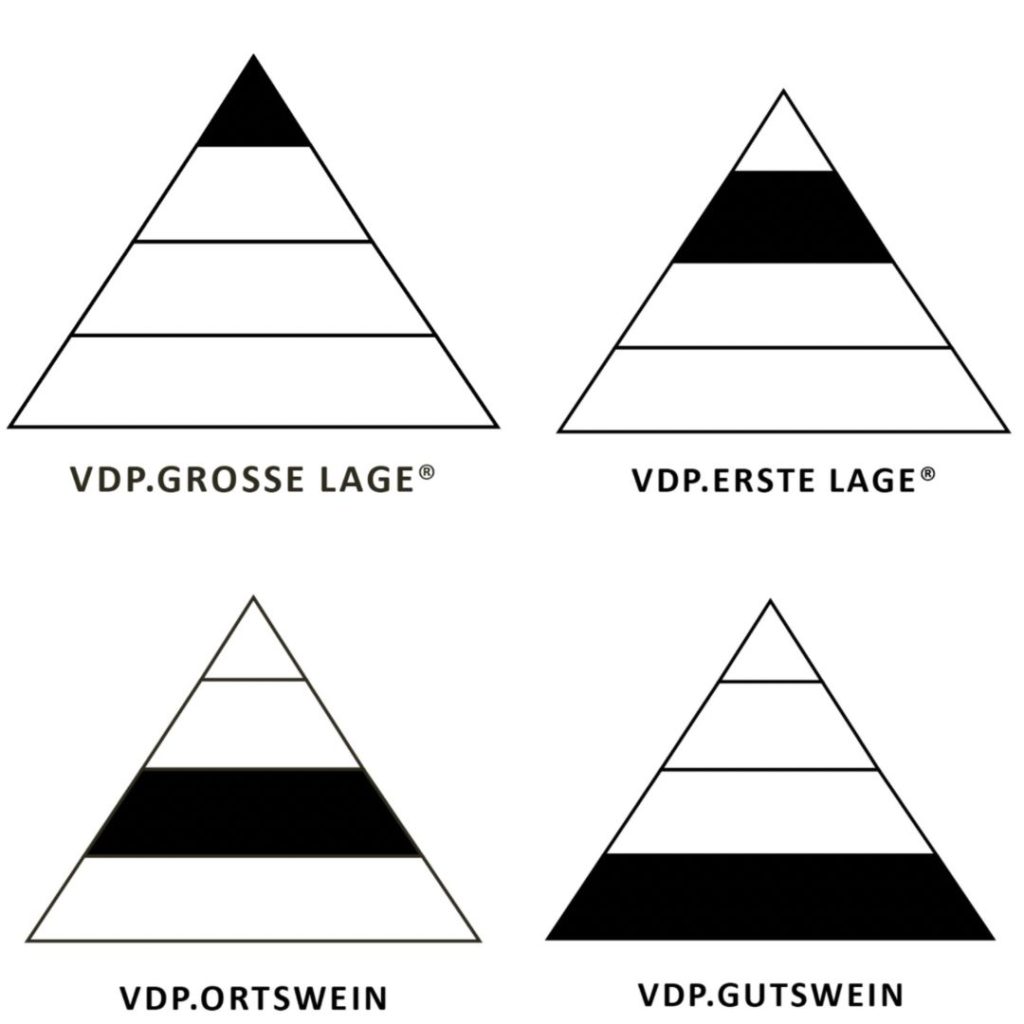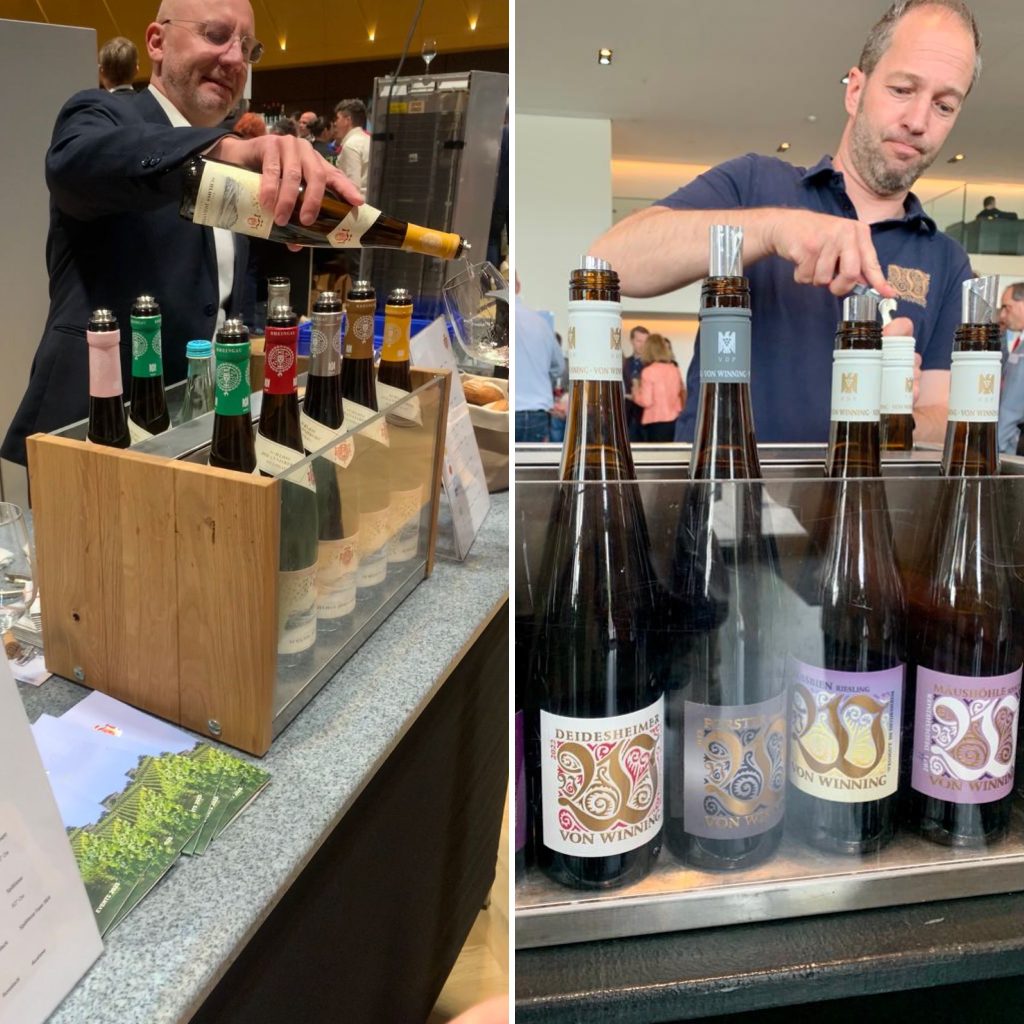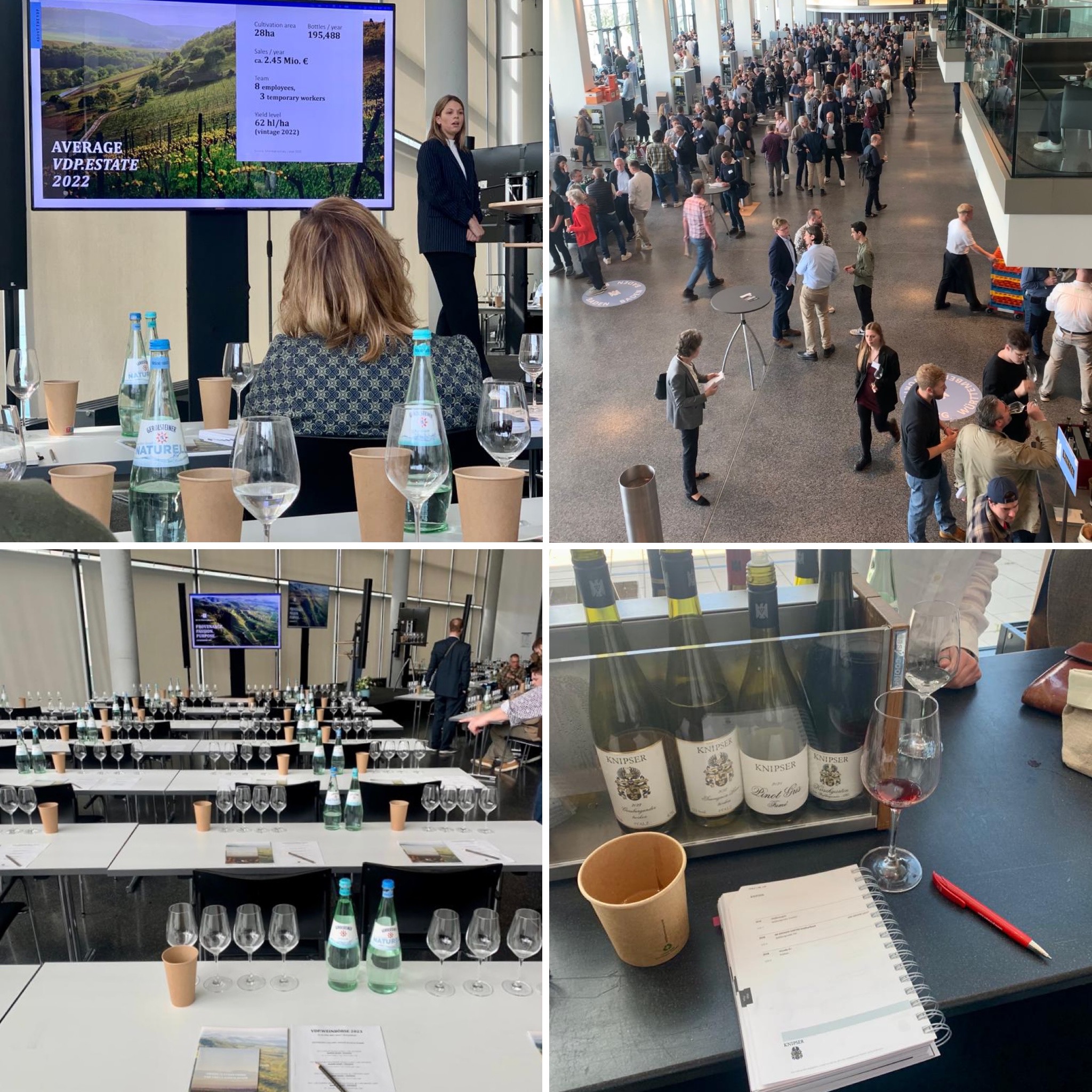VDP Weinbörse 2023 – 201 quality winemakers under one roof.
Our own Chanti recently returned from a wine trip to Germany organized by Klazien Vermeer, wine educator at De Wijnschool. The main event of the trip was attending the two-day Weinbörse of the Verband Deutscher Prädikatsweingüter, or VDP in short. Klazien is an ambassador of the VDP and her goal was to introduce the new generation of wine professionals to the VDP. After having tasted over 100 VDP wines and having visited five wineries, it is safe to say Klazien succeeded.
What is the VDP?
German wine laws stem from a time when Germany was known for its sweet wines and the classifications therefore see to the sugar levels of the grapes. Wines can receive a Prädikat designation related to weight of the must (translating the sugar levels of the grapes). Going from lowest to highest those are Kabinett, Spätlese, Auslese, Beerenauslese, Trockenbeerenauslese or Eiswein.
When German winemakers shifted from sweet wines to quality terroir-driven wines, this system was no longer deemed appropriate. Every dry wine would classify as a Kabinett, but this would not say anything about the quality of the wine itself. As a result, Germany is the first country where winemakers came together to start their own qualification system: the VDP.
VDP Classification
The guiding principle for the VDP classification is: the narrower the appellation of origin, the higher the quality. There are four levels of classification for dry wines:
- VDP Gutswein
- VDP Ortswein
- VDP Erste Lage ®
- VDP Grosse Lage ®
The last two translate to premier cru and grand cru like we know from Burgundy, France. Wines that are fruity and noble sweet still bear the traditional Prädikat designations.

Gutswein
60% of all VDP wines classify under the entry level VDP.GUTSWEIN. These wines are ‘basis at its best’. They are often the first wines of a wine year and can be enjoyed while young. All grape varieties are accepted but at least 80% of the vine varieties grown should be typical for the region. The harvest is limited to a yield of 75 hl/ha.
Ortswein
The next level is the VDP.ORTSWEIN. These wines originate from high-quality, characterful and traditional vineyards within a local wine district. They are ‘ambassadors of the best soils’ and express the typical local terroir. Only regional grape varieties are bottled and harvest is capped at 75 hl/ha.
Erste Lage
VDP.ERSTE LAGE® are first class wines that show an independent profile. The grapes come from top vineyards that have their own distinctive character. Selected grape varieties are approved per region. Harvest is limited to a maximum of 60 hl/ha and this must be done by hand. The wines are produced exclusively by traditional production methods.
Grosse Lage
The highest designation is VDP.GROSSE LAGE®. The vineyards are precisely demarcated by parcel and the wines show an individual character and express the essence of their vineyard of origin. Dry wines from these vineyards are called VDP.GROSSES GEWÄCHS® – or ‘GG’ in short – and are bottled in special bottles embossed with the GG grape logo. The permitted grape varieties are designated per region, they must be handpicked and the maximum yield is limited to 50 hl/ha. Wines are subject to audits and additional control and testing.
VDP.Weingüter – VDP Wineries
Becoming a member to the VDP is only possible through invitation followed by a one to two-year process and various audits. And it doesn’t follow that once you are a member, you will always be a member. All wineries must prove regularly – at least every five years during a company audit – that the VDP rules and standards are adhered to. As a result, the list of members is a living document, changing all the time. At this moment there are 201 VDP.WEINGÜTER. You can check the interactive map of VDP.VINEYARD.ONLINE for an overview.
Our Favourites
White wines
The VDP.Weinbörse is where the wineries present their new vintages to the world. As a result, most of the wines (certainly the 1G®/GG® Rieslings) are still very young. Some wineries, such as Dr. Bürklin-Wolf, also brought some older vintages to show the development in their wines.
One of our favorite wineries was Von Winning, where we tasted three 2021 Riesling GG’s that showed great potential. There were slight differences between the vineyards, but all wines have a great balance between sugars and acidity, are super clean and crisp and just a joy to drink. The labels were beautiful, colorful and modern. Their VDP.GUTSWEIN from sauvignon blanc was also very special and a real surprise!
A special shout-out to Weingüt Knewitz and Bischel, who arranged for an amazing walking-tasting during our first dinner at 100 Guldenmühle. And Weingüt Balthasar Ress who showed us around their wineBANK and paired an incredible 2001 Riesling Spätlese and 1989 Riesling Auslese with our dessert.
Red wines
Thanks to climate change and its microclimate, Weingüt Herzog von Württemberg is able to produce a Cabernet Sauvignon as well as a Syrah. This was very interesting to taste, but in our opinion cannot beat a Spätburgunder from the Ahr.
With its beautiful and luscious red fruit aroma’s, depth and structure, the wines from Weingüt Burggarten were among our favorites. Interestingly, they also make a very tasty and affordable Blanc de Noir from Spätburgunder. A real joy to drink on a sunny afternoon. We were lucky enough to be able to visit the winery on our way home and take some bottles with us.

Conclusion
All in all, this was a great event, showcasing the immense potential and diversity Germany and the VDP wineries have to offer. For everyone who thinks that Germany is only about sweet (Riesling) wines, head over there and get surprised! Germany’s future is bright!
Would you like to learn more about VDP.Wines?
If you would like to learn more about German wines and the VDP you can attend a wine workshop, -course or -trip, organized by Klazien Vermeer – De Wijnschool. This event was covered by our own Chanti de Jong.
.

